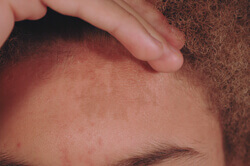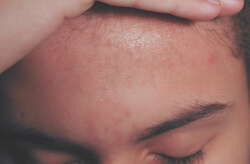Don’t get us wrong. We use IPL and think that it definitely has a place at our laser practice. However, we wanted to address the issue (or confusion) around whether an IPL is the same as a laser. It’s not. So, if you want laser treatment, then you shouldn’t have an IPL. They are apples and oranges.
Why is laser treatment better than IPL
Now, with that out of the way let’s talk about how lasers and IPL are different. First, they both use light as an energy source. But lasers use one, single wavelength of light. IPLs use multiple wavelengths (usually a range). If that doesn’t sound like a major difference to you, let us explain a bit more why it should.

 The main “targets” for lasers are hemoglobin (blood vessels, redness, vascular growths), melanin (pigmented spots, freckles, birthmarks, dark hair and tattoos) and water (useful in skin resurfacing procedures). Because lasers use a single wavelength directed at one of these parts of the skin tissue, a laser is more powerful, targeted and effective when treating one of these particular issues.
The main “targets” for lasers are hemoglobin (blood vessels, redness, vascular growths), melanin (pigmented spots, freckles, birthmarks, dark hair and tattoos) and water (useful in skin resurfacing procedures). Because lasers use a single wavelength directed at one of these parts of the skin tissue, a laser is more powerful, targeted and effective when treating one of these particular issues.
An IPL on the other hand is a “jack-of-all-trades.” The wavelength of light used in an IPL is based upon a filter that is placed in the device. When an IPL is fired, an intense pulse of visible light is created, but the filter only lets a certain range of that light through the hand-piece. Most of the time, the range includes wavelengths that target both redness and pigmentation. Because IPL is less targeted, energy must be lower, which limits the type of treatments we can use it for.
Lasers amplify the single wavelength of light that they use to make it powerful enough to destroy the tissue it is targeting. IPLs may provide some result, but their design doesn’t allow for high peak power, so the results may not be quite as dramatic or permanent.
Class IV medical lasers are the most effective and efficient way to tackle many cosmetic skin conditions. That is why at Celibre Medical we prefer to use these devices to address our patients’ skin concerns. While many other practices use IPLs for many of the same types of skin conditions, our experience shows that doing so leads to more adverse outcomes, increased risk of side effects and higher overall costs to patients.
For example, the photos above show a person with a café-au-lait spot, a type of pigmented birthmark. This patient should only have treatment with a q-switched laser, not an IPL. With our Medlite C6 q-switched laser, we were able to significantly reduce the appearance of this lesion. Had this person had an IPL, it most likely would have only made this type of pigmented birthmark worse.

